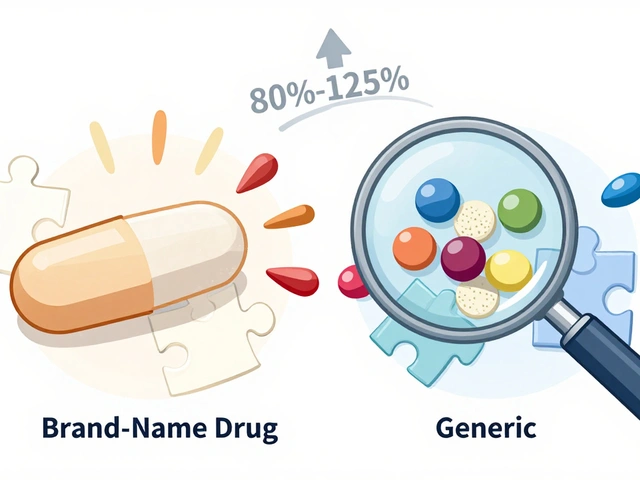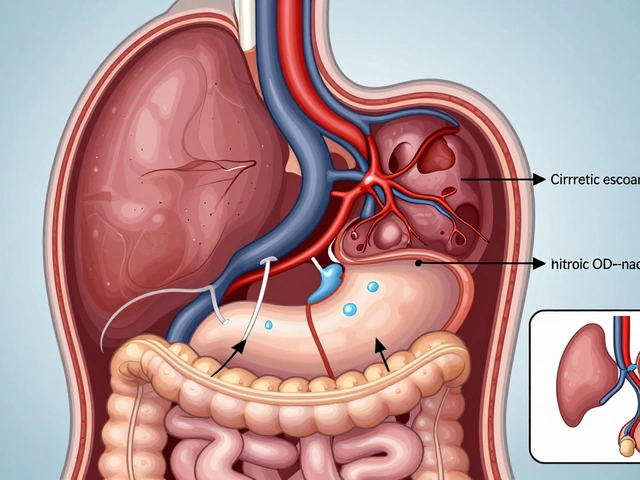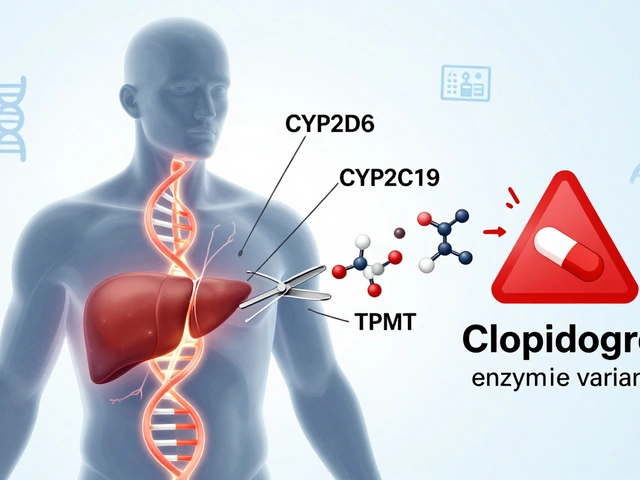Most everyday skin infections are treated with narrow-spectrum antibiotics like flucloxacillin or cephalexin. So where does cefpodoxime actually fit? Short answer: it has a niche. It can be a handy oral step‑down when you need broader Gram‑negative coverage, or as a partner drug when you’re chasing MRSA but still need reliable streptococcal cover. It’s not the hero for classic cellulitis, and it won’t touch MRSA by itself. I’ll show you exactly when to reach for it, the doses that work in real life, and how to avoid common traps.
- Best use cases: oral step‑down from IV therapy, polymicrobial risk (e.g., diabetic foot), or as a companion to a MRSA‑active agent to retain streptococcal coverage.
- Not first‑line for simple cellulitis; doesn’t cover MRSA. For non‑purulent cellulitis, narrow beta‑lactams remain the go‑to.
- Typical adult dose: 200 mg by mouth every 12 hours with food; adjust to every 24 hours if eGFR <30 mL/min.
- Duration: 5-7 days for uncomplicated cases; longer (7-14 days) for complicated infections, guided by response.
- Evidence and guidance: aligns with IDSA SSTI guidance, NICE NG141 (cellulitis/erysipelas), and 2025 Sanford Guide; always follow local microbiology advice.
Where cefpodoxime fits (and where it doesn’t)
Skin and soft tissue infections (SSTIs) look similar on the surface-redness, warmth, tenderness-but the microbiology behind them isn’t the same. Non‑purulent cellulitis is usually driven by beta‑haemolytic streptococci. Purulent infections revolve around Staphylococcus aureus and, in many communities, MRSA. Bite wounds, diabetic foot infections, and ulcers can be polymicrobial, bringing in Gram‑negative rods and anaerobes.
Cefpodoxime is an oral third‑generation cephalosporin. It reliably hits streptococci and many Enterobacterales (like E. coli, Klebsiella), and it has variable activity against methicillin‑susceptible Staph aureus (MSSA). It doesn’t cover MRSA. That spectrum makes it a poor single agent for classic cellulitis but useful when you anticipate or document Gram‑negative involvement, or when you need to pair it with a MRSA drug that’s weak on streptococci.
If you’re in the UK, first‑line oral therapy for uncomplicated non‑purulent cellulitis is usually flucloxacillin (or cephalexin where used). NICE NG141 backs narrow beta‑lactams for typical cellulitis and suggests alternatives like doxycycline or clarithromycin for penicillin allergy. None of these recommendations place cefpodoxime as first choice. That’s intentional: narrower agents work and drive less resistance.
So when does cefpodoxime earn its place?
- Oral step‑down after IV therapy: A patient improving on ceftriaxone/cefazolin who needs to go home still covered for Gram‑negative rods? Cefpodoxime can carry the baton.
- Polymicrobial risk: Mild to moderate diabetic foot infections often involve streptococci plus Gram‑negatives. In that setting, cefpodoxime can be part of a regimen-often alongside metronidazole for anaerobes, depending on local patterns.
- Partner drug for MRSA regimens: Doxycycline and trimethoprim-sulfamethoxazole (TMP-SMX) cover MRSA but are patchy against Group A strep. Adding a beta‑lactam that hits streptococci helps. Many use cephalexin; cefpodoxime is a reasonable alternative when Gram‑negative coverage is also a concern.
- Allergy workarounds: In true penicillin anaphylaxis, cephalosporins are generally avoided. But for non‑severe penicillin allergy labels, third‑generation cephalosporins like cefpodoxime have very low cross‑reactivity (around 1% in modern series). Use clinical judgement and local policy; consider de‑labelling where appropriate.
Where it doesn’t fit:
- Monotherapy for abscesses with suspected MRSA: perform incision and drainage; if antibiotics are needed, use a MRSA‑active agent. Add a streptococcal cover if there’s spreading cellulitis.
- First‑line for standard cellulitis: choose flucloxacillin or cephalexin (or doxycycline/clarithromycin if allergy) unless you’ve got a specific reason to widen the spectrum.
- Deep tissue infections needing debridement (necrotising infection, compartment syndrome): that’s a surgical and IV broad‑spectrum situation-don’t try to patch it with oral cefpodoxime.
What does the evidence say? The IDSA SSTI guideline supports narrow beta‑lactams for non‑purulent cellulitis and adding MRSA coverage for purulent presentations. NICE NG141 mirrors this in the UK. The Sanford Guide (2025) lists cefpodoxime as an oral option when you want extended Gram‑negative activity or an oral step‑down from IV third‑generation cephalosporins. Randomised trials comparing oral agents for cellulitis often show similar cure rates across reasonable choices, with stewardship favouring the narrowest effective option. That’s why cefpodoxime is a supporting act, not the headliner.

How to use cefpodoxime safely and effectively
Here’s a simple flow to decide if cefpodoxime is right for your patient, then how to dose it correctly.
- Define the infection: non‑purulent cellulitis, purulent abscess/cellulitis, bite wound, diabetic foot infection, or surgical site infection? Note systemic signs, immune status, and local epidemiology (MRSA prevalence, resistant Gram‑negatives).
- Check if narrow coverage will do: if it’s classic, mild non‑purulent cellulitis in a stable adult, stick to flucloxacillin/cephalexin first.
- Ask three key questions:
- Is there a credible Gram‑negative risk (e.g., diabetic foot, chronic ulcers, post‑operative, recurrent healthcare exposure)?
- Do I need a beta‑lactam to back up a MRSA agent (doxycycline or TMP-SMX) to cover streptococci?
- Is this an oral step‑down after IV ceftriaxone/cefazolin where continuity of spectrum matters?
- Select dose and duration:
- Adults with normal renal function: 200 mg by mouth every 12 hours. Take with food to improve absorption.
- Renal impairment: if eGFR/CrCl <30 mL/min, extend to every 24 hours. On haemodialysis, give the dose after dialysis.
- Children: 5 mg/kg per dose every 12 hours (max 200 mg per dose). Confirm with local paediatric guidance.
- Duration: 5-7 days for uncomplicated infections; extend to 7-14 days if response is slow or infection is complicated (e.g., diabetic foot), adjusting to clinical progress.
- Consider combination therapy when needed:
- Purulent/MRSA risk: add doxycycline or TMP-SMX to cover MRSA; keep cefpodoxime (or cephalexin) for streptococci.
- Bite wounds/anaerobe risk: add metronidazole if you’re not using co‑amoxiclav; consult local bite wound protocols.
- Set monitoring and follow‑up: review in 48-72 hours. Expect less pain and spreading. If it’s worse, reassess the diagnosis (is it gout? DVT? Necrotising infection?), check adherence, look for abscess, and consider cultures/imaging or escalation.
Practical dosing tips:
- Food matters: taking cefpodoxime with a meal improves bioavailability and stomach comfort.
- Separate from antacids/H2 blockers: magnesium/aluminium antacids and H2 antagonists can reduce absorption. Space them by 2-3 hours if possible.
- Watch the kidneys: most of the drug is renally cleared. Dose‑adjust early if eGFR is low.
- Warfarin users: cephalosporins can modestly raise INR; arrange an extra INR check if the course is more than a few days.
- Probenecid increases levels: rarely an issue, but be aware if your patient is on it for gout.
Safety profile to keep in mind:
- Common: nausea, diarrhoea (including C. difficile risk), headache, mild rash, thrush.
- Allergy: avoid if there’s a history of immediate anaphylaxis to beta‑lactams; for vague penicillin allergies, risk of cross‑reactivity with later‑generation cephalosporins is low (~1%). Consider allergy de‑labelling pathways.
- Pregnancy and breastfeeding: cephalosporins are widely used and generally considered safe in pregnancy; small amounts enter breast milk and may cause loose stools in infants-usually mild.
- Paediatrics: dosing is weight‑based; flavour and twice‑daily schedule help adherence. Keep syrups away from antacids.
Reality check on durations: shorter is better when the patient responds. Most uncomplicated cellulitis settles with 5 days of therapy if it’s the right drug and the source is controlled. Prolong courses only when there’s a clear reason (slow clinical response, poor perfusion, persistent oedema, immunosuppression), and reassess for hidden abscess or osteomyelitis if things drag on.

Comparisons, quick choices, FAQs, and next steps
Choosing the right antibiotic is easier when you can see trade‑offs side by side. Here’s a compact view of common oral options for SSTIs and how they compare in day‑to‑day decisions.
| Agent | Strep coverage | MSSA | MRSA | Gram‑negatives | Anaerobes | Typical adult dose | Best for | Watch‑outs |
|---|---|---|---|---|---|---|---|---|
| Cefpodoxime | Good | Variable | No | Yes (many Enterobacterales) | No | 200 mg PO q12h | Oral step‑down; diabetic foot (with add‑ons); companion to MRSA drug | No MRSA; adjust in renal impairment; antacid interaction |
| Cephalexin | Good | Good | No | Minimal | No | 500 mg PO q6-8h | Uncomplicated non‑purulent cellulitis | Frequent dosing |
| Flucloxacillin (UK) | Good | Good | No | No | No | 500 mg PO q6h | First‑line for typical cellulitis | GI upset; frequent dosing |
| Co‑amoxiclav | Good | Good | No | Yes | Yes | 625 mg PO q8h | Bites; polymicrobial risk | Diarrhoea; cholestasis risk |
| Doxycycline | Poor | Fair | Yes | Some | No | 100 mg PO q12h | MRSA coverage (add strep cover) | Photosensitivity; avoid in pregnancy/young children |
| TMP-SMX | Poor | Good | Yes | Some | No | DS 1 tab PO q12h | MRSA coverage (add strep cover) | Hyperkalaemia; interactions |
| Clindamycin | Good | Good | Some (region‑dependent) | No | Yes | 300-450 mg PO q6-8h | Penicillin allergy alternative | C. difficile risk; resistance varies |
Quick decision checks you can run at the bedside:
- Classic cellulitis in a stable adult with no MRSA risk? Choose a narrow beta‑lactam (flucloxacillin/cephalexin). Save cefpodoxime for later if you need to widen.
- Abscess with surrounding cellulitis in a MRSA area? Incise and drain. Add doxycycline or TMP-SMX, plus streptococcal cover (cephalexin or cefpodoxime) if the cellulitis is significant.
- Diabetic foot with mild-moderate infection? Think polymicrobial. Co‑amoxiclav is a strong single‑agent option. If you can’t use it, consider cefpodoxime plus metronidazole (and tailor to cultures).
- Going home after IV ceftriaxone or cefazolin? If Gram‑negative coverage was intentional, cefpodoxime is a logical oral step‑down.
Common pitfalls to avoid:
- Using cefpodoxime alone for MRSA‑heavy infections-won’t work.
- Skipping drainage for abscesses-antibiotics can’t replace a scalpel when pus is present.
- Forgetting anaerobe cover in bites or foul‑smelling ulcers-add metronidazole if not on co‑amoxiclav.
- Underdosing in renal impairment-or overdosing by ignoring eGFR. Check kidney function early.
- Misreading allergic histories-“penicillin allergy” labels are often wrong; involve allergy teams when possible.
Mini‑FAQ
Does cefpodoxime cover MRSA? No. If MRSA is on your mind, add doxycycline, TMP-SMX, or follow local MRSA guidance. Keep a beta‑lactam on board for streptococci if there’s spreading cellulitis.
Is cefpodoxime better than cephalexin for cellulitis? Not for straightforward cases. Cephalexin (or flucloxacillin) is better targeted against the usual suspects and supports antimicrobial stewardship.
What about impetigo or erysipelas? Impetigo: use topical agents or flucloxacillin/cephalexin orally if extensive. Erysipelas: narrow beta‑lactams shine. Cefpodoxime isn’t the go‑to for either unless you have special circumstances.
Can I use cefpodoxime in pregnancy? Cephalosporins are widely used and considered safe. As always, treat the infection early and choose the narrowest effective agent.
Any notable drug interactions? Antacids (Mg/Al) and H2 blockers reduce absorption; separate doses. Warfarin may see a bump in INR-monitor.
How quickly should patients feel better? Most start to improve within 48-72 hours: less pain, less heat, edges stop spreading. Redness can lag behind-don’t chase the colour alone if the patient is perkier and markers are falling.
Why not just use co‑amoxiclav for everyone? It’s broad and convenient, but it drives more resistance and side effects. Use broader agents only when they’re likely to change outcomes.
Evidence corner (for the guideline‑minded): IDSA SSTI guidance supports narrow agents for non‑purulent cellulitis and tailored MRSA cover for purulent disease. NICE NG141 recommends flucloxacillin first‑line in the UK, with macrolides or doxycycline for penicillin allergy. The Sanford Guide (2025) positions cefpodoxime as an oral option for extended Gram‑negative coverage and step‑down therapy. Modern observational data show low cross‑reactivity between penicillins and third‑generation cephalosporins (around 1%); de‑labelling programmes in the BMJ and JAMA literature highlight the benefit of correcting inaccurate allergy records.
Next steps and troubleshooting
- If you’re a GP or urgent care clinician: For mild cellulitis, start narrow; book a 48-72 hour review. Consider cefpodoxime only when you need Gram‑negative cover or a beta‑lactam partner to a MRSA drug. Mark the skin edge with a pen to track progress.
- If you’re in hospital: When stepping down from IV therapy, match the oral spectrum to the IV intent. If the patient was on ceftriaxone for Gram‑negatives, cefpodoxime often makes sense. Always re‑check cultures before discharge.
- If you’re managing diabetic foot: Debridement first. Off‑loading and vascular assessment are non‑negotiable. Antibiotics help, but they won’t fix pressure or ischaemia. Choose agents based on severity and likely organisms; cefpodoxime is a tool, not the whole kit.
- If things aren’t improving: Re‑examine for abscess or necrotising infection; confirm adherence; check for drug interactions that cut absorption; consider resistant organisms; escalate to imaging or surgical input early.
- If you’re uncertain about allergy: Use local penicillin allergy pathways. Many “allergic” patients can safely receive cephalosporins after assessment.
Cheat‑sheet (print‑friendly):
- Adult dose: 200 mg PO q12h with food; eGFR <30 → q24h.
- Pair with doxycycline or TMP-SMX if MRSA risk; add metronidazole for anaerobes when needed.
- Use for step‑down or Gram‑negative risk; not first‑line for routine cellulitis.
- Review at 48-72 hours; 5-7 days is usually enough if improving.
- Avoid antacids/H2 blockers around doses; watch INR on warfarin.
That’s the practical role of cefpodoxime in SSTIs: a helpful, targeted option when you need a little more than the basics, but not a blanket solution. Choose it for the right reasons, dose it right, and keep a close eye on early response.







19 Comments
Michael Vandiver
Hey folks, just wanted to say great overview on cefpodoxime 😊 its niche use is clearer now! I’ll keep this in mind when stepping down from IV therapy.
Emily Collins
Wow, this read feels like a deep dive into antibiotic theater! The way you laid out the step‑down strategy could save a lot of patients from endless IV lines. I’m impressed by the thoroughness.
Harini Prakash
Thanks for the clear breakdown 😊. I especially appreciate the bit about renal dosing – it’s something I’ve seen missed often. The table makes quick decisions easier :) Keep it up!
Rachael Turner
The flowchart idea is useful. I like that you mentioned antacid interactions – they’re easy to overlook. Overall solid guidance.
Suryadevan Vasu
Accurate dosing summary. Renal adjustment note is spot on.
Vin Alls
Reading through this piece felt like strolling through a vibrant pharmacy aisle lit by the glow of evidence‑based practice. The author artfully paints cefpodoxime as the underdog hero, ready to step into the spotlight when Gram‑negative shadows loom. Each indication is dissected with the precision of a surgeon’s scalpel, carving out the exact moments where this third‑generation cephalosporin shines. The dosing chart reads like a culinary recipe, sprinkling 200 mg every twelve hours with a dash of food for optimal absorption. Renal impairment warnings are sprinkled with the delicacy of a seasoned chef adjusting spices for a sensitive palate. I love how the author juxtaposes narrow‑spectrum agents against broad‑spectrum titans, reminding us that stewardship is the true master. The section on diabetic foot infections feels like a map through a treacherous swamp, guiding us past polymicrobial pitfalls. The discussion on MRSA partnership is a symphony of collaboration, where doxycycline or TMP‑SMX play the violins while cefpodoxime sings the alto. Antacid interactions are flagged with the subtlety of a lighthouse warning ships of hidden reefs. The safety profile is presented with the honesty of a seasoned storyteller, acknowledging nausea, diarrhea, and the ever‑present C. difficile specter. Pregnancy considerations are handled with the tenderness of a lullaby, reassuring clinicians of the drug’s relative safety. Monitoring recommendations echo the rhythm of a heartbeat, urging review at 48–72 hours to catch any discord. The author’s nod to de‑labeling penicillin allergies feels like a breath of fresh air in a stale hallway of misconceptions. The emphasis on early clinical improvement as a beacon of success is both comforting and motivating. Finally, the conclusion wraps the entire narrative with a bow of practicality, leaving readers equipped, empowered, and ready to prescribe wisely.
Tiffany Davis
The table is a handy reference for quick decisions. I appreciate the balanced tone between clinical detail and practical advice. This will be useful in both primary care and urgent settings.
Don Goodman-Wilson
Great, another pill to add to the endless pharmacy maze.
Bret Toadabush
You know they probably push cefpodoxime because big pharma wants more profit. The guidelines feel like a script written by lobbyists. Still, the info isn’t useless if you read between the lines.
Diane Thurman
Thiss article covers most basics but misses the point about real world resistance. You should check local antibiograms more often.
Iris Joy
I love how you emphasized the importance of reviewing patients at 48‑72 hours; it’s a key step many overlook. The reminder about antacid interactions will definitely prevent a few mishaps. Thanks for the comprehensive cheat‑sheet!
Sarah Riley
From a pharmacokinetic standpoint, cefpodoxime’s renal clearance mandates dose modulation in eGFR<30 mL/min. Therapeutic drug monitoring isn’t routine but advisable in complex cases.
Tammy Sinz
The decision‑tree you provided aligns well with current antimicrobial stewardship frameworks. However, I’d argue that for polymicrobial diabetic foot infections, a combined regimen with metronidazole might be preferable over cefpodoxime alone. Also, consider local epidemiology when selecting MRSA adjuncts. Overall, solid guidance but room for nuance.
Christa Wilson
Fantastic summary! This will definitely help my clinic make smarter choices 😊
John Connolly
The dosing recommendations are clear and evidence‑based. I appreciate the inclusion of both UK and US guideline references. This post will be a go‑to resource for our antimicrobial stewardship team.
Sajeev Menon
Great work, team! Remember to tailor therapy to each patient’s comorbidities and local resistance patterns.
Emma Parker
Hey, love the detail – super helpful! Gotta say, the table makes it so easy to pick the right drug.
Joe Waldron
Thank you for the thorough overview; the step‑down guidance is especially valuable. Additionally, the warning about separating antacids by 2‑3 hours is crucial; many patients overlook this. Your cheat‑sheet will surely improve prescribing practices.
Wade Grindle
This article balances depth with readability nicely. It will be a useful reference for clinicians.